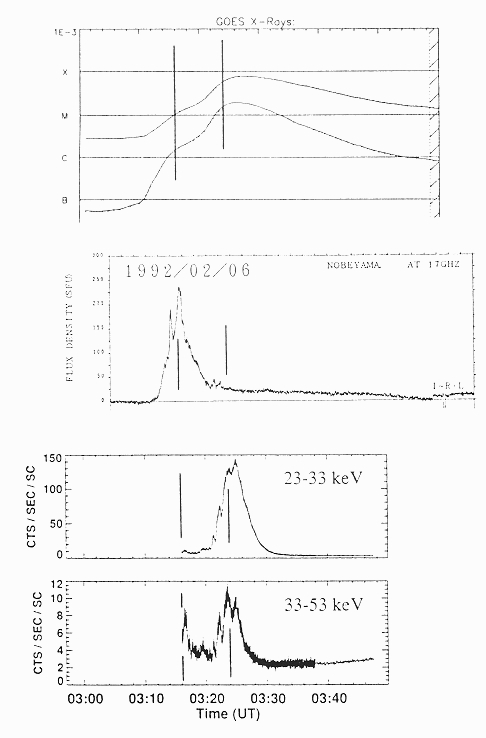
(Kosugi et al., in Proc. Kofu Symposium "New Look at the Sun with Emphasis on Advanced Observations of Coronal Dynamics and Flares", NRO Report 360, 127-129, 1994.)
Yohkoh/HXT can observe not only non-thermal emission, but also thermal emission from a super-hot (> 30 MK) plasma. Flares without any impulsive (non-thermal) signatures, are sometimes observed in the hard X-ray energy range. In these flares, a thermal component is dominant. They were called "type A" flares in the Hinotori era.

Time histories of the 6 February, 1992 flare in soft X-rays (top: from GOES), Microwaves at 17 GHz (Middle: from Nobeyama), and hard X-rays (bottom: from Yohkoh HXT). The second peak at ~ 03:25 UT shows typical characteristics of a super-hot thermal flare.

Hard X-ray (33-53 keV: contours) and soft X-ray (Be filter: grey scale) images of the 6 February, 1992 flare. The flare occurred near the west limb at N05W82, so that we see vertical structures in projection. The solar north is to the top, west to the right. Each map covers 78 x 78 arcsec. In the first stage at 03:16:17 UT (top left), the double footpoint hard X-ray sources are clearly seen. In the second stage after 03:22 UT, a new flaring loop brightens with the hard X-ray source appearing near the top.